History is filled with stories of great deeds, the exploits of rebels, patriots and politicians, writers and artists, scientists and innovators. They are bold, they are brave – and they are almost all men.
In advance of International Women’s Day on March 8th, we want to celebrate some less well-known stories: the fearless women who helped shape the course of Irish society or history, or who contributed to our understanding of the world. This list is by no means comprehensive: it’s a snapshot of the women who smashed stereotypes and haven’t always had the recognition they deserve. From saints to stargazers, pioneers to revolutionaries, and medieval queens to medical doctors, they may not have statues in their honour – some don’t even merit a mention in the history books – but they are not forgotten.
1. Brigid of Kildare
As a figure of legend and Ireland's only female patron saint, as well as the goddess of poetry, healing and smithwork in Celtic myth, Brigid (c 451-523) is hardly unrecognised. But we'd argue she hasn't always been celebrated for the right things. During the 19th century, she was held up as a symbol of divine femininity, while generations of Irish schoolchildren still associate her with reed crosses. But she was much more than that: a powerful Abbess who offered an alternative to the confines of domestic life to up to 14,000 women, a peaceweaver, a fearless negotiator who secured women's property rights, and freed trafficked women. And she was also reputed to be an expert dairywoman and brewer.
2. Margaret O'Carroll
Margaret O'Carroll of Éile, Co Offaly (d. 1451) was a medieval queen, patron of the arts, road and bridge builder. She organised the 1440s equivalent of Electric Picnic: epic festivals of literature attended by 2,700 people, and described by scholars as "national events of high and singular importance", earning her the title Margaret the Hospitable. A contemporary scholar noted that she "was the only woman that has made most of preparing highways, and erecting bridges, churches, and mass-books."
3. Grace O’Malley
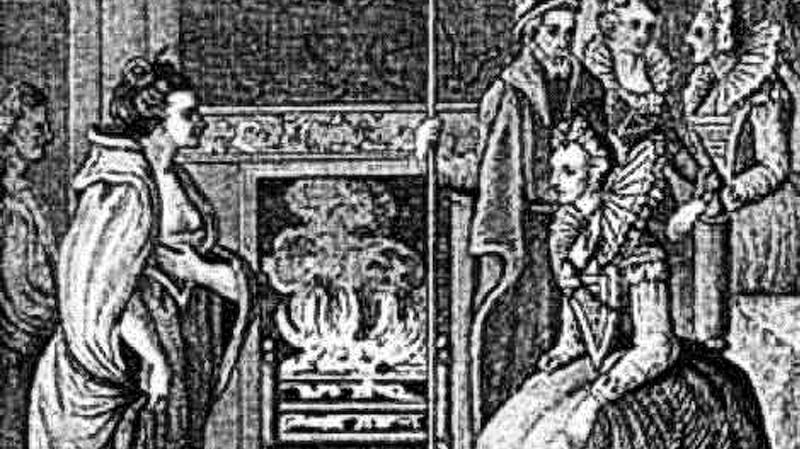
The pirate queen Grace O'Malley (c. 1577-1597), known also as Gráinne Mhaol, is a mostly romantic figure in Irish folklore, but in reality she was a fearless leader, canny diplomat, and long-time thorn in the side of the British ruling class. Lord president of Connacht Richard Bingham described her as "nurse to all rebellions in the province for this forty years". Her influence was such that she was granted a meeting with Elizabeth I in 1593 during which, speaking in Latin, she secured the release of her son. "She is remarkable as being the only woman from 16th-century Gaelic Ireland who is recorded as taking a leadership role within her sept," the Oxford Dictionary of National Biography notes.
4. Peg Plunkett
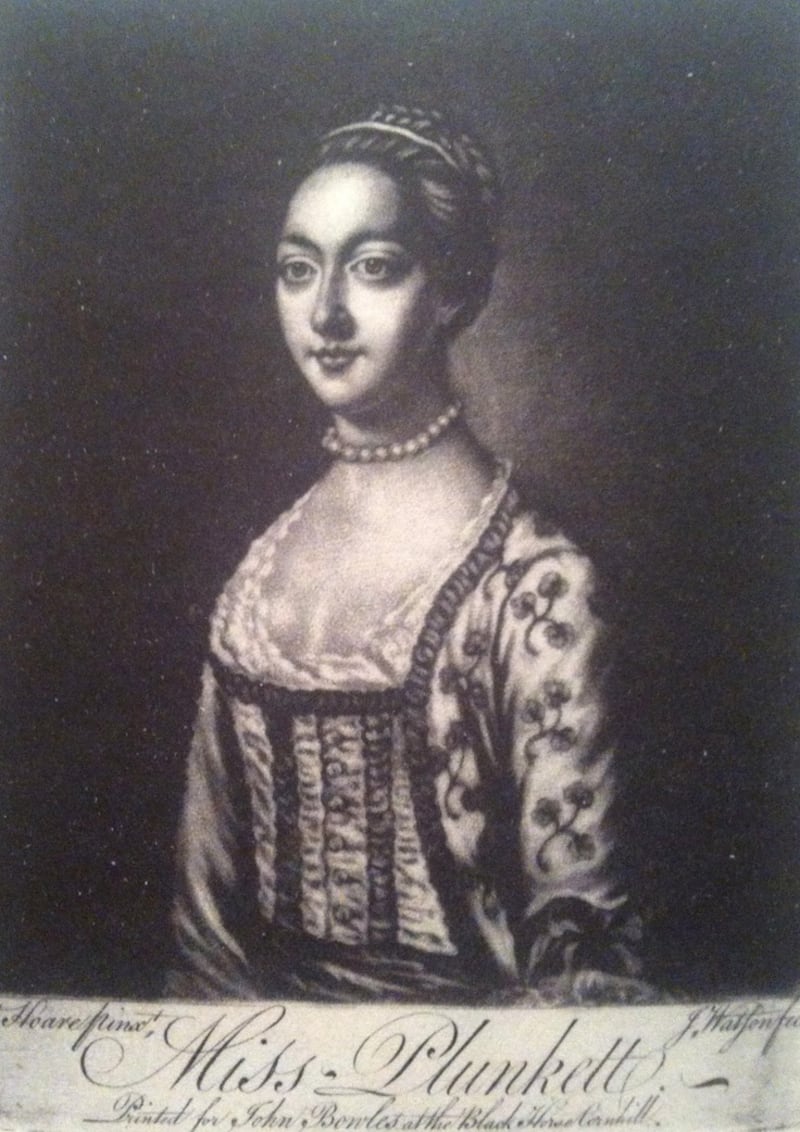
Peg Plunkett (c. 1727–1797) was the Ashley Madison of her day, an Irish brothel-keeper in Dublin who, when she retired and found her former clients were slow to settle their debts, responded – to their horror – by publishing three volumes of memoirs. Plunkett was brutally attacked during a raid of her brothel by a gang of upper class thugs known as the Pinking Dandies, and successfully took the gang leader, Robert Crosbie, to court. One of the best stories about her concerns the time she was instructed to make way for the monarch while in London. She replied, “I think part of the road was for my use, as well as for that of the King, and if you English are servile and timid, we Irish are not.”
5. Maria Edgeworth
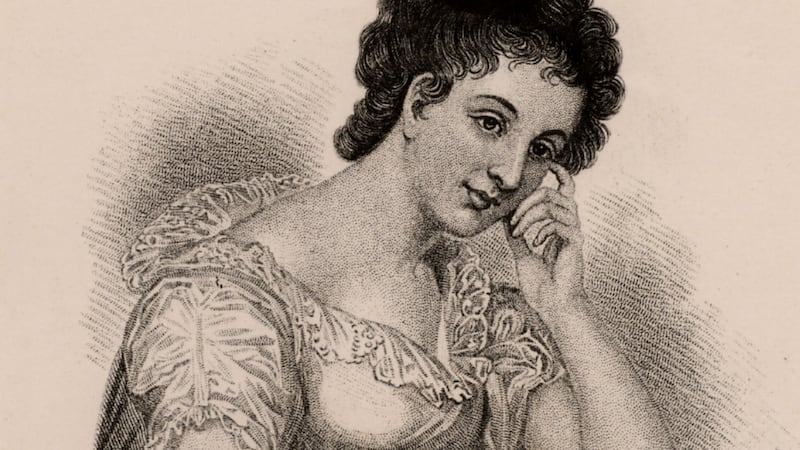
Maria Edgeworth (1767-1849) is often overlooked among the greats of the Irish literary canon, despite being one of the most successful novelists of her generation, with a gift for social observation and dialogue that earned the admiration of Sir Walter Scott and Jane Austen. She was one of the first writers to portray the Irish peasant class as real people, with real stories. During the Famine, by then a tiny creature of almost 80, she went door-to-door in Edgeworthstown, Co Longford, distributing food.
6. Dr James Barry
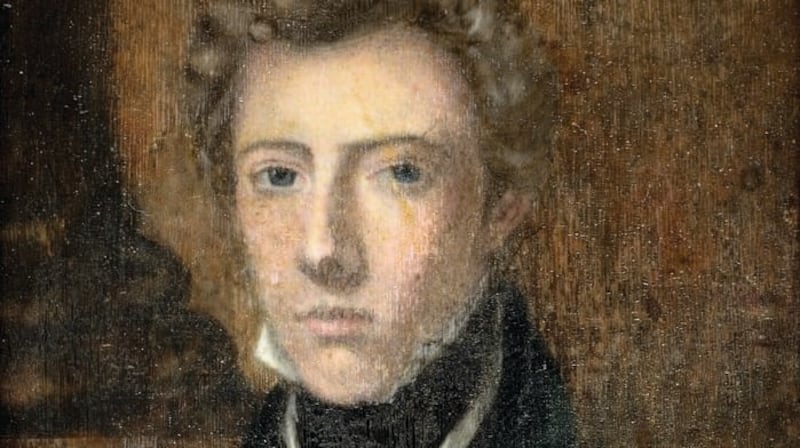
If ever there was a story to offer a tantalising glimpse into what women might have achieved throughout history had they been freed from expectations about gender, it's the life of Margaret Ann Bulkley, a young Cork woman, who grew up to hold the second highest medical office in the British Army. But she first had to reinvent herself as Dr James Barry (1789-1865).
Bulkley became Barry at 20 at first as a route into university in Edinburgh, and possibly to escape the confines of life as a woman. It worked: Barry’s subsequent progress through the British Army was impressive. Everywhere she worked across the British empire, she brought about improvements to public health, sanitation and nutrition, and performed one of the first C-sections survived by both mother and child. Barry’s secret was revealed after her death, when her instructions that she be buried without an inspection of her body were ignored.
7. Lady Jane Wilde
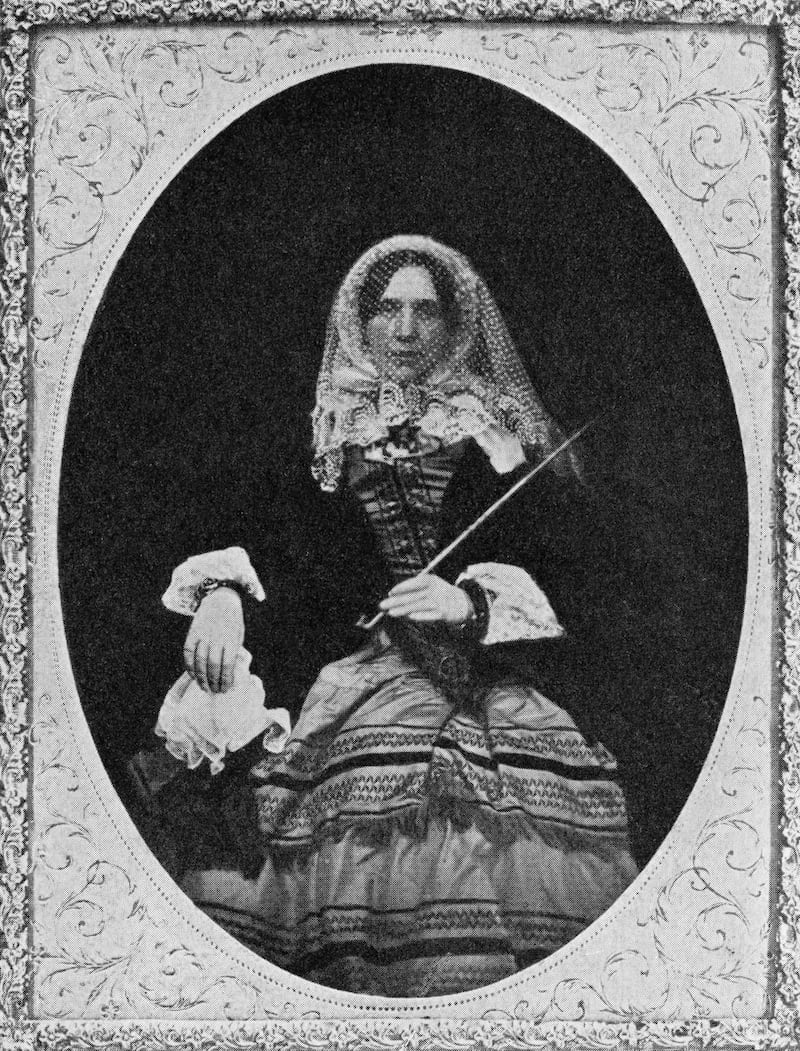
Though much less famous in subsequent years than her middle son Oscar, Wexford woman Lady Jane Wilde (1821-1896) was a significant figure in 19th-century Ireland: a gifted linguist and poet who published under the name Speranza, a documenter of the Famine, a women's rights activist, and a nationalist who used her writing to call for insurrection. In 1864, she and her husband Sir William were at the centre of a sensational court case, after they were sued for libel by Mary Travers, who claimed he had seduced her and was awarded £2,000. Within a few years, Wilde would lose her daughter Isola, her husband, her home, their fortune, and see her son Oscar imprisoned.
8. Agnes Clerke

Skibbereen-born Agnes Clerke (1842-1907) fell in love with the stars when she first saw them as a child through her father's telescope. Her book, A Popular History of Astronomy during the Nineteenth Century, is still regarded as one of the seminal texts. She won a host of plaudits normally reserved for men and, in 1981, NASA named a crater on the moon, close to where Apollo 12 landed, in her honour.
9. Anna Parnell
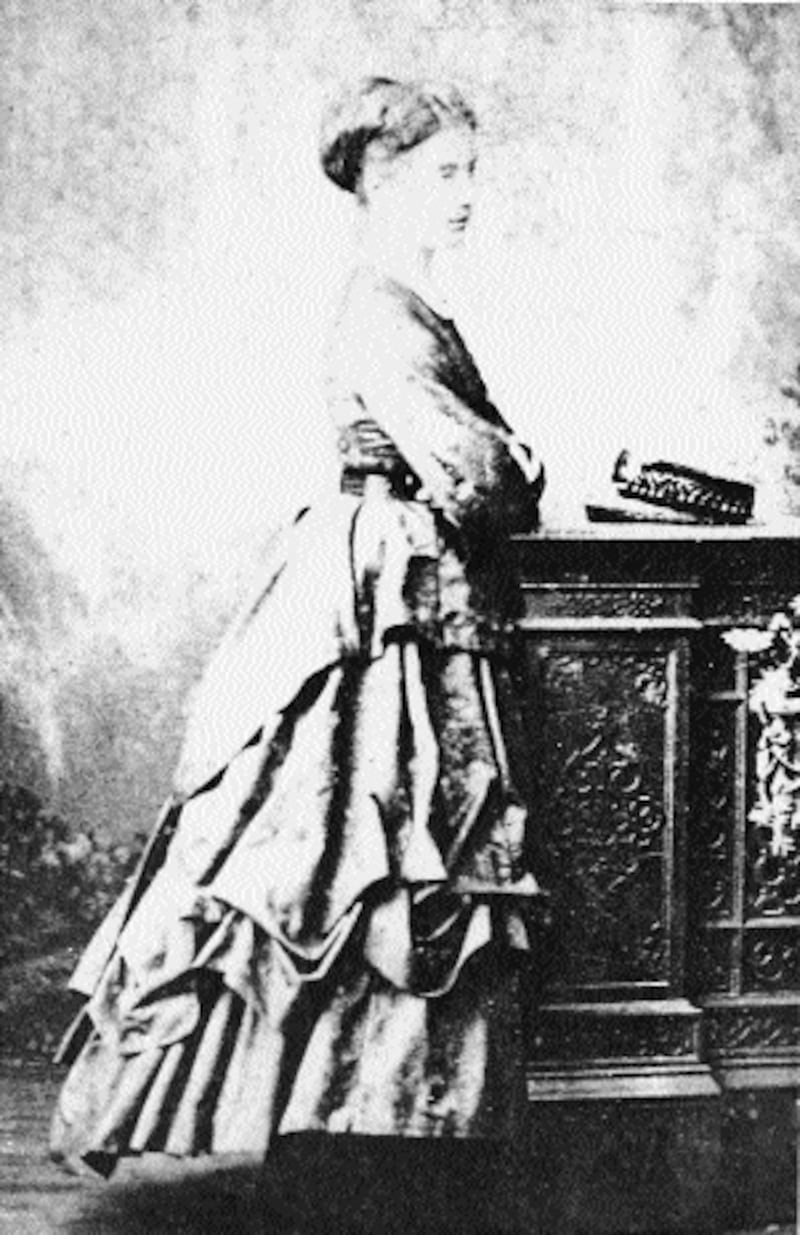
She may be less well remembered than her brother Charles Stewart, but Anna Parnell (1852-1911) and her sister Fanny were nonetheless inspirational figures in the Ladies' Land League of the 1880s – fundraising, opening 500 branches countrywide, fighting for tenant farmers' rights and distributing 60,000 pounds in relief funds. Anna – who was seen as a symbolic figure – became estranged from her brother, who mistrusted her understanding of politics, and, after his death, moved to England, where she changed her name to Cerisa Palmer.
10. Jenni Wyse Power
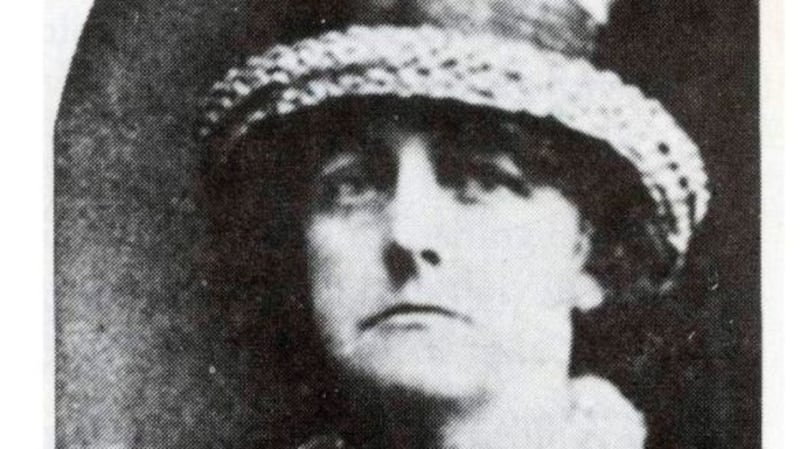
Jenni Wyse Power (1858-1941) is one of the better-known female figures in the Rising and politics of the 20th century. She was an activist, feminist, politician and businesswoman, a founder-member of Sinn Féin, founder of Inghinidhe na hÉireann and founder and president of Cumann na mBan. The signing of the Proclamation took place at her shop, restaurant and home at 21 Henry Street, which later served as the headquarters of the Irish Volunteers in 1919. She was one of the few nationalist women to support the Treaty, and set up Cumann na Saoirse in March 1922. She was appointed to the first Seanad, and used her position to campaign for rights for women.
11. Annie Russell Maunder
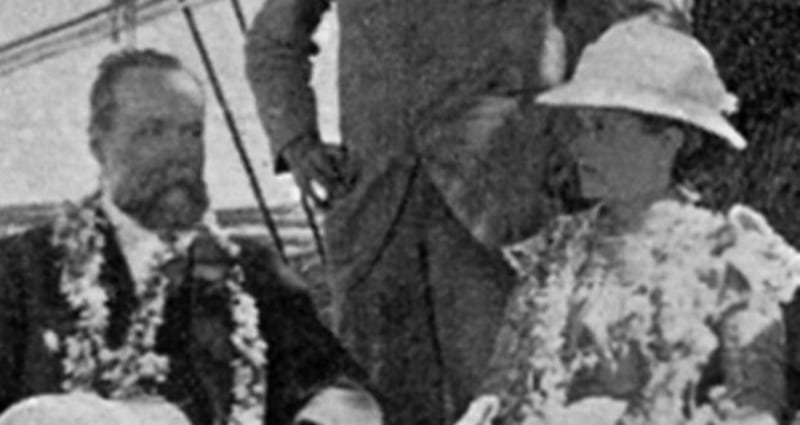
Annie Russell Maunder (1868-1947) is the other Irish woman with a crater on the moon named after her. The Tyrone-born woman studied at Cambridge and, though she graduated as the top mathematician of her year, restrictions on women meant she was not awarded a BA. She got a job as a “lady computer” at the Greenwich Royal Observatory, where her job was to photograph the sun, until her forced retirement after her marriage to her colleague, Walter Maunder, in 1895. Her work was widely studied and published – often under her husband’s name. The crater Maunder on the moon is named after her and her husband, as is the Maunder Minimum, the period between 1645 and 1715 when sunspots were rare.
12. Dr Kathleen Lynn
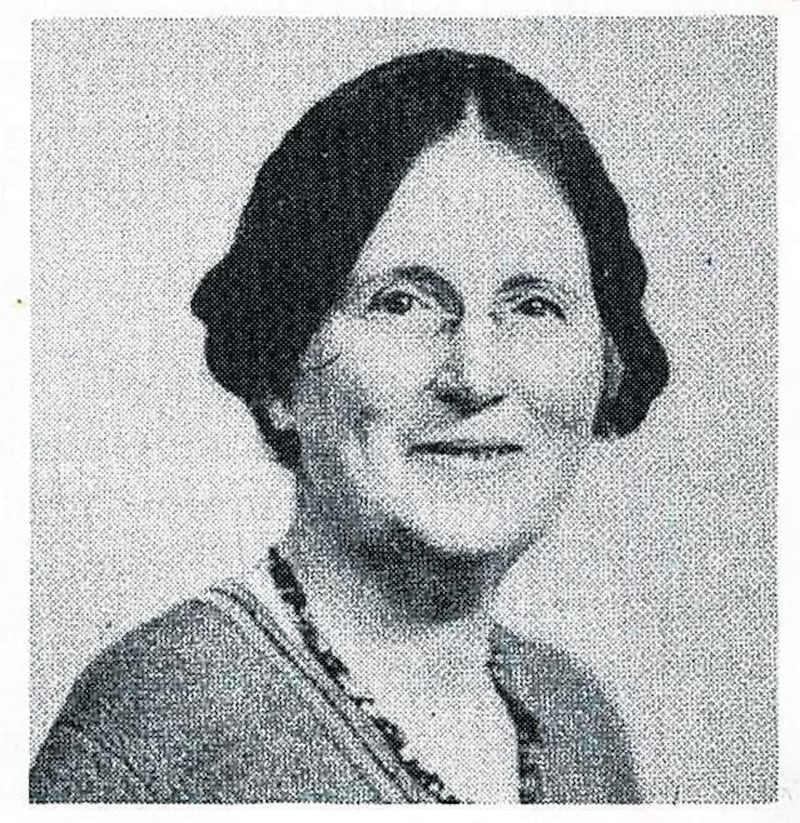
The inventory of Dr Kathleen Lynn’s contributions is long: a medical doctor specialising in opthalmology; a volunteer in the soup kitchens during the 1913 Lockout; medical officer to the Irish Citizen Army (ICA) during the Rising, for which she was imprisoned; a campaigner for equal rights for women; and the co-founder with her lifelong partner, the equally fearless Madeleine ffrench-Mullen (and a budget of €70) of St Ultan’s Hospital for Infants. Not only did Lynn (1874-1955) not get a thank-you from the founding fathers, “by the time of the Civil War, women such as Lynn, who opposed the Treaty, were being castigated as irrational, extremist and almost deranged,” noted Diarmuid Ferriter, written off as “hysterical young women” who should be at home polishing the brasses. She was elected to the Dáil in the 1923 elections, but did not take her seat.
13. Eva O'Flaherty
Not nearly enough is known about Achill Island's intriguing Eva O'Flaherty (1874-1963), a fashionista, entrepreneur and activist. She was milliner on London's Sloane Street, an artist's muse, and later a businesswoman who founded a textile business. She was also the founder of Ireland's oldest summer school, Scoil Acla, and – for a time – an active nationalist, thought to have been one of the "basket women" couriers during the Rising. Regular visitors to her home included WB Yeats, Paul Henry and Graham Greene.
14. Hanna Sheehy Skeffington
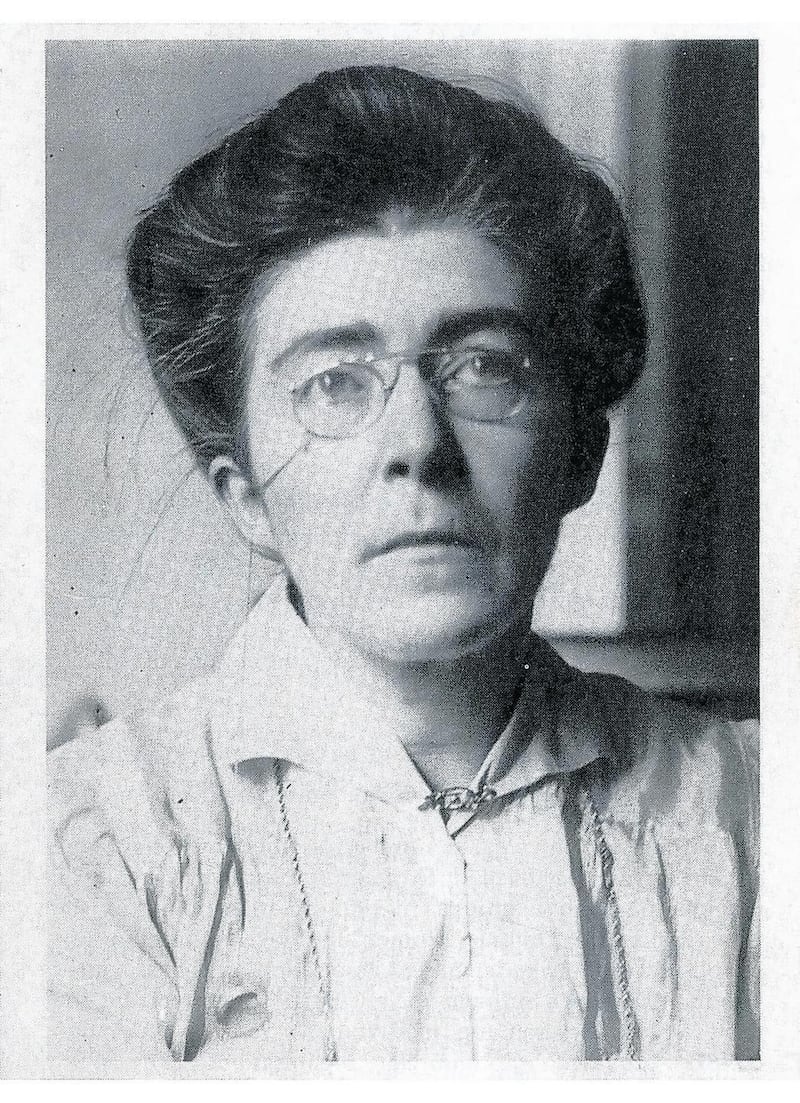
On the 100th anniversary of the vote for Irish women, there has been a resurgent interest in the life of Hanna Sheehy Skeffington (1877-1946) – unrelenting campaigner for the equal rights of men and women, active nationalist, founding member of the Irish Women Workers' Union, and co-founder of the Irish Women's Franchise League (IWFL). In June 1912, Sheehy Skeffington was one of eight women jailed for smashing the glass windows at Dublin Castle after women were excluded from the franchise of the third Home Rule Bill. She was back in Mountjoy the following year, after assaulting a police officer. She was also active in the Rising, delivering food and messages to the GPO – unaware until two days afterwards that her husband, Francis Skeffington, had been shot and killed. She remained a campaigner for women's rights and an active nationalist throughout her life.
15. Lilian Bland
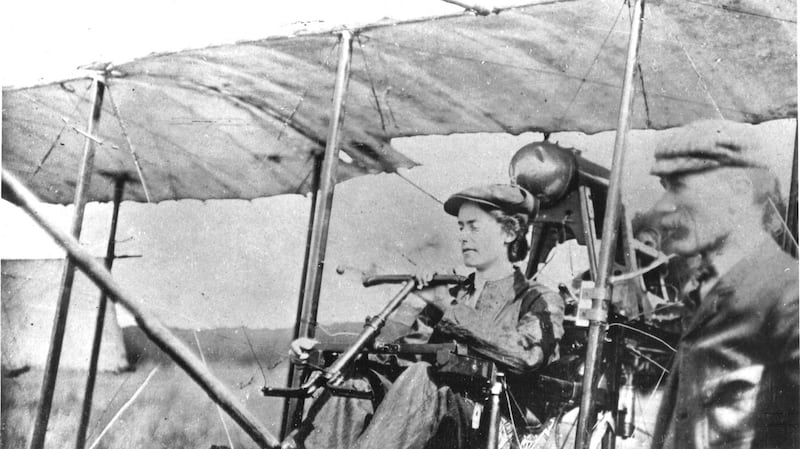
The gutsy "flying feminist" Lilian Bland (1878 –1971) was the first woman in Ireland to build and fly an aircraft, and the world's first female aviation engineer. Born in England, she grew up in Antrim, where she engaged in such unladylike pursuits as smoking, wearing britches, shooting and, well, building planes. In August 1910, Bland took her biplane, the Mayfly, some 30 feet off the ground, at which point her father promised to buy her a car if she'd stay on terra firma. Not being a woman to do things by halves, she ended up running Belfast's first Ford car dealership. After an unsuccessful attempt to ride in the Grand National, she married a cousin, Charles Loftus Bland, and moved to Vancouver with him. She died at the age of 92, reportedly still making waves.
16. Margaret Elizabeth Cousins
Born in Boyle, Co Roscommon, Margaret Elizabeth Cousins (1878-1954) refused to be hemmed in by boring stereotypes. She was a unionist, Methodist, nationalist, suffragist, medium, campaigning vegetarian and music teacher who refused to give up her job after she got married. She was jailed in both London and Dublin for smashing windows at 10 Downing Street and Dublin Castle in protest at the exclusion of women's suffrage from the Home Rule Bill. In 1915, she and her husband moved to India where she continued to campaign for women's rights, and organised the first all-India and all-Asia women's conferences.
17. Mary Spring Rice
Mary Spring Rice (1880-1924) was an Anglo-Irish aristocrat and a more hands-on Irish nationalist activist than many of her better-known male contemporaries. She helped raise the funds to buy the weapons needed for the 1916 Rising, and then sailed out on the Asgard during the Howth gun-running of July 1914 to pick them up. Remarkable photographs show her sitting alongside Molly Childers on board, a Mauser rifle lying casually on top of a box marked 'Hamburg' between them.
18. Helena Molony
Helena Molony (1883-1967) is a fascinating, complex and, like many of the women on this list, a bewilderingly underappreciated figure in Irish history. She was an actor; a magazine editor; a campaigner for school meals for children; one of the founders of Na Fianna; an active combatant in the 1916 Rising; a courier for Michael Collins; the second female president of the Irish Trade Union Congress; a lifelong feminist. In 1911, she became the first Irish female political prisoner of her generation, after she smashed a portrait of George V during the monarch's visit to Ireland. In the run-up to the Rising, she took delivery of parcels which contained the printed copies of the Proclamation, and kept them under her pillow – along with a revolver. When the fighting broke out, she was part of the attack on Dublin Castle, and was captured and imprisoned again for seven months. After the Civil War, she remained active in the republican cause in the 1930s, and continued to work for women's labour rights, even after her retirement from public life in 1946.
19. Dorothy Stopford Price
The "rebel doctor" Dorothy Stopford Price (1890-1954) – the niece of another fearless Irishwoman, Alice Stopford Green – was responsible for introducing the BCG vaccination to Ireland. In the early 1920s, she was a dispensary doctor in West Cork, where she offered first-aid classes to the IRA, and treatment for those hurt during the War of Independence and the Civil War. In 1923, she joined Dr Kathleen Lynn as house surgeon at St Ultan's. In the 1930s, as TB swept the country, she began importing and testing the BCG vaccine, campaigning for a nationwide programme. This brought her into conflict with John Charles McQuaid, who wanted healthcare to remain under control of the Catholic Church. She was appointed head of the national vaccination programme in 1949. Sadly, she suffered a stroke in 1950.
20. Rosie Hackett

Rosie Hackett (1892 – 1976) was just 18 when she organised a strike of 3,000 workers at Jacobs Biscuits, and co-founded the Irish Women Workers' Union (IWWU) with Delia Larkin. During the Lockout, she was one of those who set up a soup kitchen. She was later active in the Rising, occupying Stephen's Green alongside Constance Markievicz and others, and was one of the group responsible for printing off the 1916 Proclamation. She would later recall handing it to James Connolly, still dripping wet. She eventually gave 60 years to the trade union movement, and was one of the people responsible for carving out modern working conditions. Rosie Hackett had a bridge named in her honour in 2014.
21. Margaret Skinnider
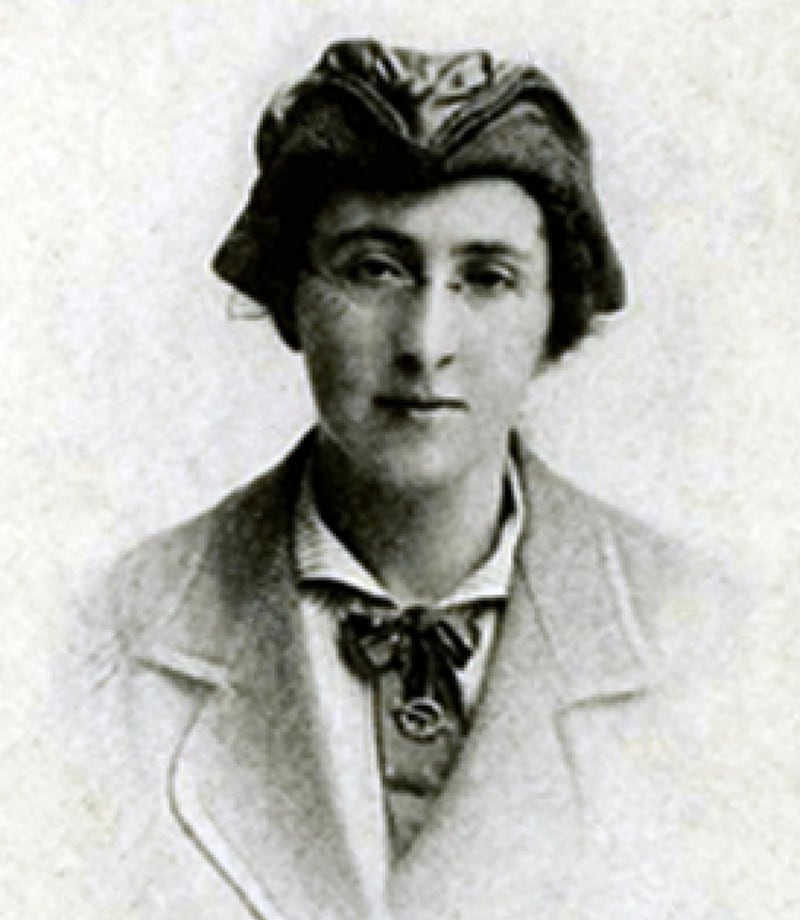
Schoolteacher-turned-marksman Margaret Skinnider (1893 - 1971) has the dubious honour of being the only woman wounded in action during the Rising. When the Scottish-born child of Irish parents got wind of imminent republican action in Dublin, she promptly resigned her job in Glasgow and travelled to Ireland over Christmas 1915, carrying detonators for bombs in her hat and wires wrapped around her body. She took on the role of scout – often dressed as a boy – and sniper during the Rising, and was mentioned three times for bravery in dispatches sent to the Dublin GPO. Unfortunately, she was shot three times as she attempted to set fire to houses on Harcourt St to cut off the retreat of the British army, and lay in agony for three days while the fighting continued. "We had the same right to risk our lives as the men [. . .] in the constitution of the Irish Republic, women were on an equality with men," she would later write. After the War of Independence, she returned to teaching in Dublin, and became an active trade unionist and proponent of women's rights.
22. Teresa Deevy
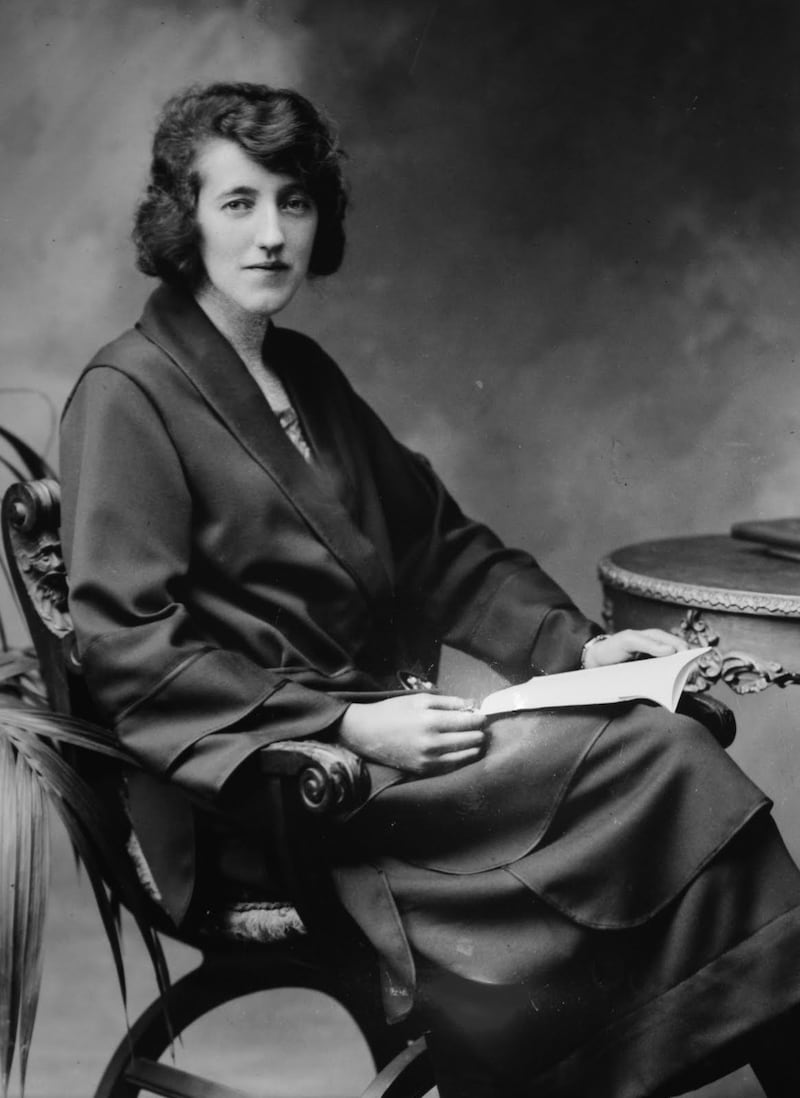
Waterford-born dramatist, nationalist and women's rights activist Teresa Deevy (1894-1963) became deaf through illness at the age of 19 but, if anything, that only made her more determined to be heard. In her mid-20s, she began writing and, by 1930, she was staging the first of a series of productions, well-received and often quietly subversive, at the Abbey, and was one of the most prolific and acclaimed female playwrights in the world at that time. She was a critic of Catholicism's repressive attitude to women and of censorship. When her relationship with the Abbey soured abruptly in 1937, she turned to writing for RTÉ and the BBC – all the more remarkable considering she had lost her hearing before radio arrived in Ireland.
23. Mainie Jellett
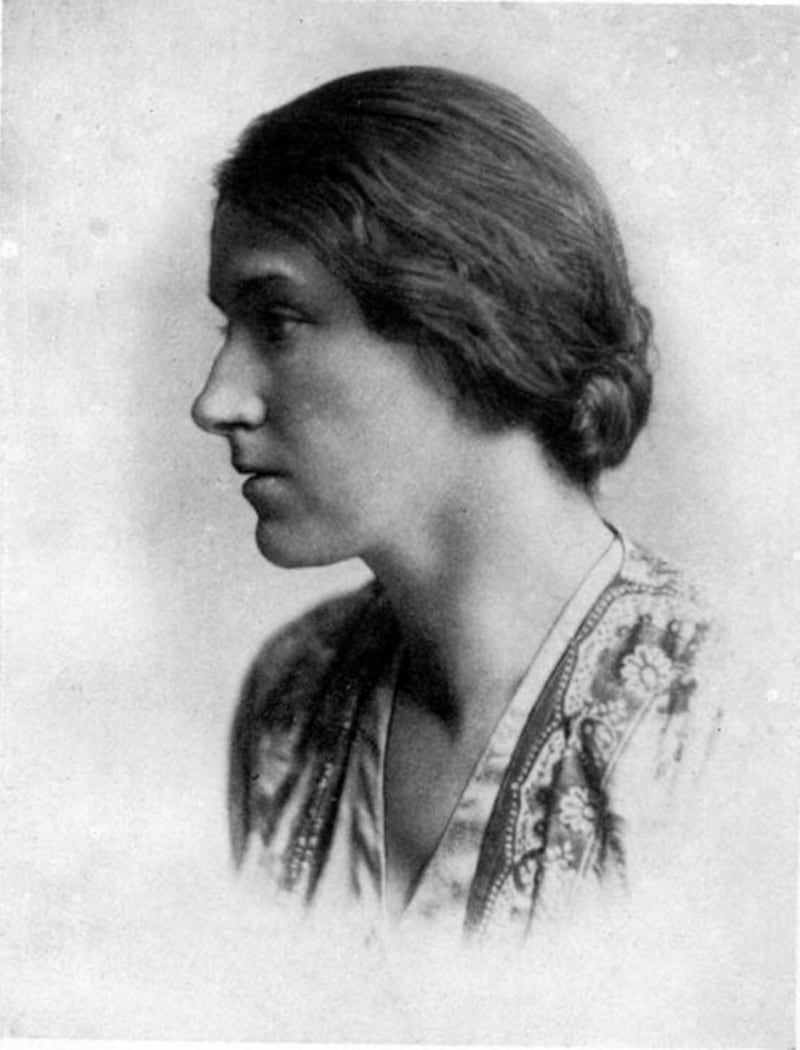
Her name may not be as well known or well loved as those of Jack B Yeats or Paul Henry, or even Eileen Grey, but Mainie Jellett (1897-1944) remains one of the most significant Irish artists of the 20th century, credited with introducing modernism to Ireland. One of her paintings was displayed, alongside one of a misshapen onion, in The Irish Times under the headline "Two freak pictures", while other publications denounced her as a dangerous source of foreign notions. But she persevered and, by the 1930s, had developed a hybrid style, her paintings combining cubism, religious art and Celtic design – and they went down better with the public.
24. Sybil Connolly

Sybil Connolly (1921-1998) changed the face of Irish fashion, dressing Jackie Kennedy, Julie Andrews and Elizabeth Taylor in the 1950s and '60s. After starting her career with Richard Alan, the Swansea-born Waterford woman was appointed design director at the fashion house Gaston Mallet at just 31. She began introducing Irish fabrics such as linen, tweed, lace and crochet, attracting the attentions of Harper's Bazaar and Life magazine. She never married, telling the Daily Mail in 1957 that she preferred to buy her own mink and diamonds.
25. Kay McNulty
Who knew one of the world's first computer programmers was an Irish woman? Donegal-born Kay McNulty Mauchly Antonelli (1921-2006), who was brought up in Pennsylvania, was one of six women selected in 1940s by the US Army to work on the ENIAC, the first general-purpose electronic digital computer. Their task was to calculate trajectories for shells and bullets for soldiers using artillery guns – essentially, these women taught themselves to programme. McNulty was inducted into the Women in Technology International Hall of Fame in 1997.
The criteria for inclusion on our list of fearless women is that they are no longer living; have made a significant contribution to their field, or to our understanding of the world; and have been largely overlooked.
There are many more stories that could have been included here – and we want to hear your ideas.
Which fearless Irish women have we missed that you feel deserve wider recognition? Click on the email link below to send your suggestions – of 200 words or less – to magazine@irishtimes.com with "Fearless Women" in the subject line.
- Sources: womensmuseumofireland.ie; Dictionary of Irish Biography; Oxford Dictionary of National Biography; CSO.ie; Wild Irish Women by Marian Broderick; Lab Coats and Lace by Mary Mulvihill; No Ordinary Women by Sinead McCoole; Achill's Eva O'Flaherty: Forgotten Island Heroine by Mary J Murphy

















